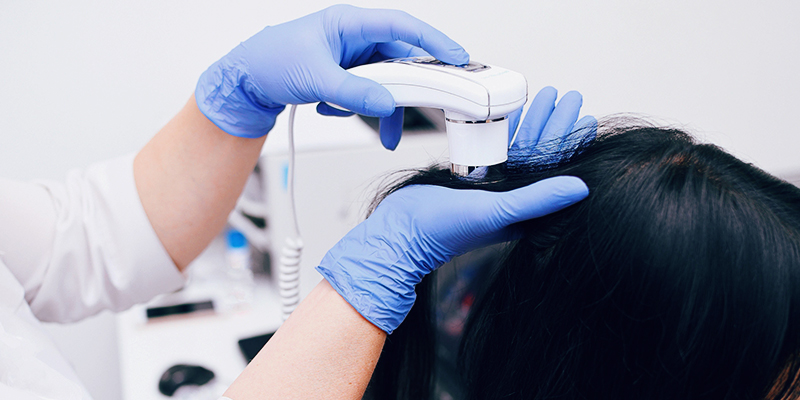Hair Transplant in the new age is a bit of a process with the new tech
Hair transplantation is a surgical technique that removes hair follicles from one part of the body, called the 'donor site', to a bald or balding part of the body known as the 'recipient site'. The technique is primarily used to treat male pattern baldness. In this minimally invasive procedure, grafts containing hair follicles that are genetically resistant to balding like the back of the head are transplanted to the bald scalp. Hair transplantation can also be used to restore eyelashes, eyebrows, beard hair, chest hair, pubic hair and to fill in scars caused by accidents or surgery such as face-lifts and previous hair transplants.
The hair is the the richest ornament of person
Since hair naturally grows in groupings of 1 to 4 hairs, current techniques harvest and transplant hair "follicular units" in their natural groupings. Thus modern hair transplantation can achieve a natural appearance by mimicking original hair orientation This hair transplant procedure.

A hair in the head is worth two in the brush
The surgeon then uses very small micro blades or fine needles to puncture the sites for receiving the grafts, placing them in a predetermined density and pattern, and angling the wounds in a consistent fashion to promote a realistic hair pattern. The technicians generally do the final part of the procedure, inserting the individual grafts in place Strip harvesting will leave a thin linear scar in the donor area, which is typically covered by a patient's hair even at relatively short lengths. The recovery period is around 2 weeks and will require the stitches staples.
professional medical hair restoration
There are several different techniques for harvesting hair follicles, each with their own advantages and disadvantages. Regardless of the harvesting technique, proper extraction of the hair follicle is paramount to ensure the viability of the transplanted hair and avoid transection, the cutting of the hair shaft from the hair follicle. Hair follicles grow at a slight angle to the skin's surface, so transplanted tissue must be removed at a corresponding angle.
Facility provided
The surgeon then uses very small micro blades or fine needles to puncture the sites for receiving.
Predetermined density and pattern, and angling the wounds in a consistent fashion to promote.
FUE can give very natural results. The advantage over strip harvesting is that FUE harvesting negates the need for large areas of scalp tissue to be harvested, so there is no linear incision on the back of the head and it doesn't leave a linear scar. Because individual follicles are removed, only small, punctate scars remain which are virtually not visible and any post-surgical pain and discomfort is minimized As no suture removal is required, recovery from Micro Grafting.
Robotic hair restoration devices utilize cameras and robotic arms to assist the surgeon with the FUE procedure In 2009, NeoGraft became the first robotic surgical device approved for hair restoration The ARTAS System was approved in 2011.
Transplants
84%Hair
91%Beard
70%

The modern era of hair transplantation in the western world was ushered in the late 1950s, when New York dermatologist Norman Orentreich began to experiment with free donor grafts to balding areas in patients with male pattern baldness. Previously it had been thought that transplanted hair would thrive no more than the original hair at the "recipient" site. Orentreich demonstrated that such grafts were "donor dominant," as the new hairs grew and lasted just as they would have at their original home.
Surgeons have also devoted more attention to the angle and orientation of the transplanted grafts. The adoption of the “lateral slit” technique in the early 2000s, enabled hair transplant surgeons to orient 2 to 4 hair follicular unit grafts so that they splay out across the scalp's surface. This enabled the transplanted hair to lie better on the scalp and provide better coverage to the bald areas. One disadvantage however, is that lateral incisions also tend to disrupt the scalp's vascularity more than sagittals. Thus sagittal incisions transect less hairs and blood vessels assuming the cutting instruments are of the same size.



